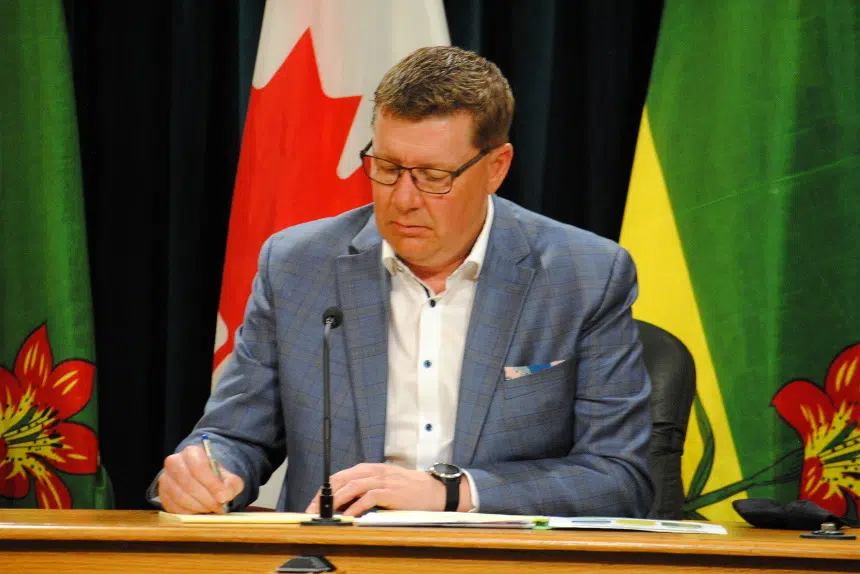Despite the provincial government’s apparent frustration, the federal carbon tax will be a fixture in Saskatchewan for at least another 17 months.
In a statement Monday, Premier Scott Moe said the federal government had rejected Saskatchewan’s submission to replace the tax.
“Saskatchewan’s submission would have protected families, jobs and industries while exceeding the federal minimum standards, in close alignment with other provincial programs previously accepted,” Moe wrote. “The rejection of Saskatchewan’s submission can only be viewed as an arbitrary and political decision from the federal government.
“While Saskatchewan will be fully evaluating the federal decision and exploring all avenues possible to protect our residents from the federally imposed carbon tax, we hope that the federal government does not take the same arbitrary and political approach to ongoing areas of federal-provincial negotiation, such as the federal child care funding, which Saskatchewan will continue to pursue.”
Moe wasn’t available Monday to answer questions.
When reached for comment by email, Moira Kelly — the press secretary for the office of the federal environment and climate change minister — didn’t explain exactly why Saskatchewan’s plan was rejected. But she did point out the federal government is in the process of updating its criteria and benchmarks for plans to fight climate change.
“We are pleased to see Saskatchewan’s interest in developing a made-in-Saskatchewan pollution pricing plan, and remain open to conversations with Saskatchewan about what their system could look like going forward,” wrote Kelly.
In a letter to Saskatchewan Environment Minister Warren Kaeding, his federal counterpart, Jonathan Wilkinson, explained the situation.
He wrote carbon pricing is being updated “to make it more fair and rigorous” and to get to the target of getting emissions 40 to 45 per cent below 2005 levels.
A draft of the new benchmark is expected to be shared with Kaeding’s office soon and he was asked to share his thoughts in the next two weeks. At some point after that, the new benchmarks will be published.
“In the coming months, all provinces and territories will have the opportunity to propose, for the 2023-2030 period, carbon pricing systems that meet these updated benchmark stringency criteria,” wrote Wilkinson.
In his statement on Twitter, Moe said the federal government wouldn’t be accepting any new submissions until 2023. But the letter from Wilkinson said the submissions wouldn’t be able to be implemented until January that year.
Wilkinson explained in the letter that systems already in place and those like the ones in Ontario and New Brunswick which were approved last year and this spring, respectively, would still go ahead.
The new benchmarks
In March, after the Supreme Court of Canada rejected Saskatchewan’s challenge of the constitutionality of the tax, Moe said his government was developing an alternative plan.
It was to create provincial greenhouse gas emissions regulations and bring SaskPower and SaskEnergy under that, rather than under the federal legislation.
Moe said at the time that would allow the province to have more control over the regulations and over where the tax money went. The province already had asked the federal government for that change and for it to be retroactive to Jan. 1, 2019.
The plan also was to include a proposal for Saskatchewan to design its own carbon pricing system for fuel, similar to the system in New Brunswick which provides a rebate right at the pump.
Grain drying was to be included under that system. Fuel for that would be exempt if possible and the province would look to refund as much of the carbon tax as possible at the outset.
A greenhouse gas offset program also was to be developed by the provincial government. Moe said at the time it would be an option for regulated industries to meet their emissions targets by buying offsets from farmers, ranchers, and the forestry industry.
Moe said the province would also ask the federal government for its share of the federal low carbon economy funding, which he said would amount to about $126 million.
However, it appears some of Moe’s past stated goals wouldn’t fly under the new criteria.
According to Wilkinson’s letter to Kaeding, there are several key changes in the works.
They included requiring that all systems cover the same proportion of emissions that the federal backstop would in their jurisdiction. The provincial plan would also need to have a clear price signal, as Wilkinson put it, so that governments couldn’t weaken it with measures like giving instant rebates or reducing fuel taxes.
The federal government would require that protections to keep industries competitive in countries without a carbon tax don’t extend to industries that don’t need it.
According to Wilkinson’s letter, the new requirements would also ensure that any offset credits would meet best practices as laid out by the federal government, and that it would include a multi-year assessment period.
980 CJME has reached out to Saskatchewan’s Ministry of Environment to see a copy of the plan submitted to the federal government.
NDP weighs in
NDP Leader Ryan Meili issued a statement about the government’s submission, saying Moe has failed the province’s residents.
“He has intentionally chosen to leave us with a plan designed in Ottawa instead of a plan that will work for Saskatchewan people,” Meili said. “Because, the truth is, no one loves the Trudeau plan more than Scott Moe. He wants to play politics, while Saskatchewan people pay the price.”
Meili said Saskatchewan has to have a plan that distributes carbon pricing revenue through a rebate that’s structured to help rural communities and farmers, and is effective in reducing emissions.
“The current plan doesn’t work for Saskatchewan,” Meili wrote. “Scott Moe doesn’t seem to care. He’s playing politics while the environment, jobs and our economy hang in the balance. His failure to bring in a made-in-Saskatchewan plan costs us all more.”







